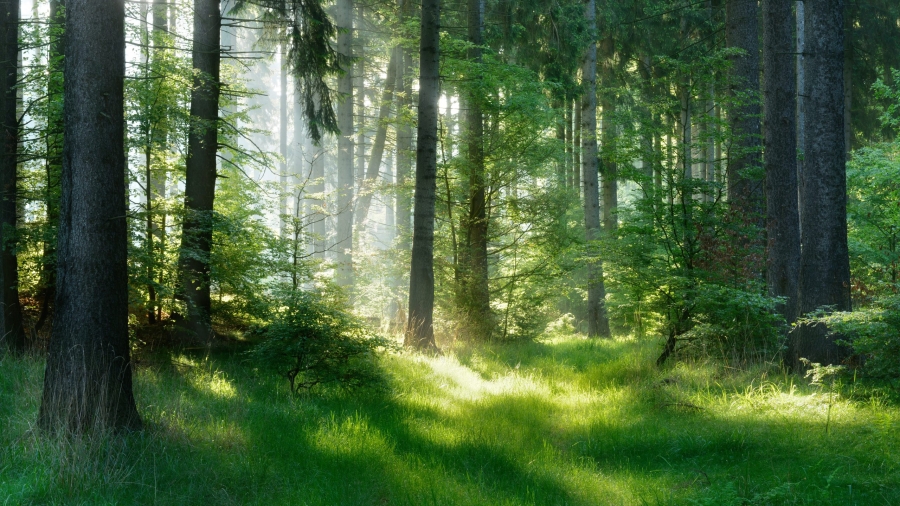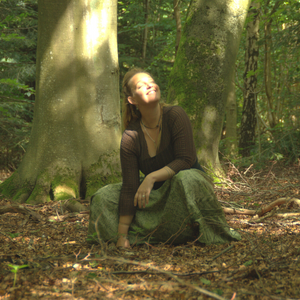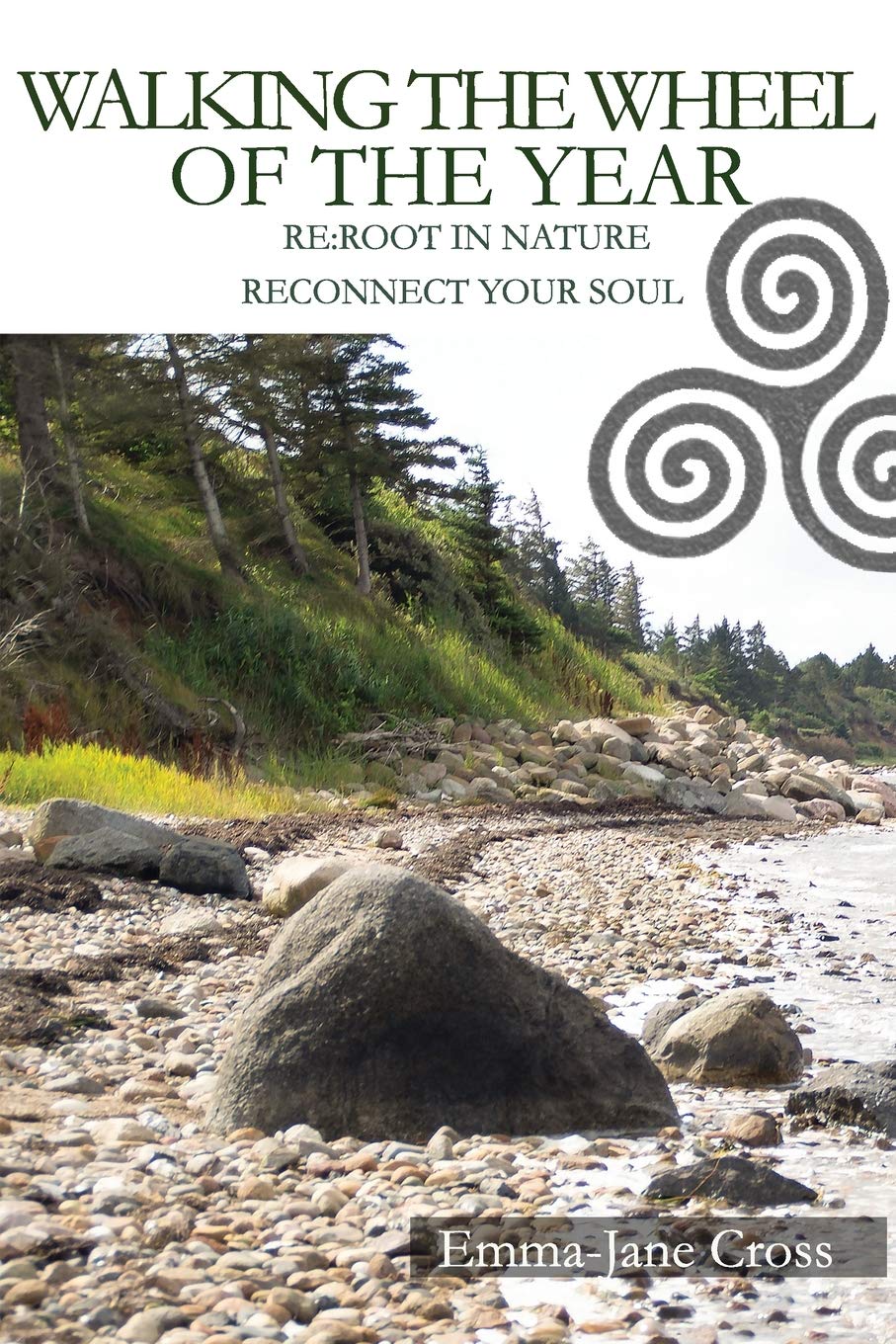by Emma-Jane Cross
The leaves are rustling. There’s a hint of ice in the rain. And the nights grow ever darker. The wheel is turning, the veils between the worlds are thinning and Samhain is drawing near….
Which also means that everyone is obsessing over pumpkin spiced lattes, and the desire to hibernate under blankets grows stronger each day. The wheel is definitely turning and nature is reminding us that we are well into autumn and moving on our way to winter. But before we get there Samhain comes on the 31 October, a bridge between the seasons, giving us a point of transition from the old wheel to the new. And as the beginning and ending of the wheel, this makes Samhain, in my opinion, the most important festival on the wheel within which our Celtic ancestors left teachings that are as relevant today as they were thousands of years ago.
Before Christianity took root in the Celtic lands, Halloween was celebrated by the Celts as the festival of Samhain. As the sun set on Samhain eve our Celtic ancestors felt the veils between the world of the dead and the world of the living becoming thinner. Stories and tales tell us, for this night they could reunite with their loved ones and, as the Celts were wont to do at every festival, they would feast and party with them until sunrise, the dawn of a new year, a new wheel. Celtic Samhain was a celebration of those that had gone before. Loved ones who had passed on. And maintaining a connection to your roots, your bloodline.
Often Samhain is portrayed as a wild night of celebration, which I am sure it was. However, I personally feel we forget there is a part of the human experience of death that surely was present at these ancient celebrations, which is often not talked about. I am talking about grief.
I know from my experiences of standing in a circle on a freezing and windy Samhain eve, hearing the voices of people honouring those that have died, struggling to speak through their tears, that grief is present in abundance at Samhain. The acute pain of loss. The aching gap that is left in our lives when a loved one dies. It fills the air at Samhain. And as much as we honour the souls that have passed, we also honour our grief by expressing it in an open, public and unrestrained way. I cannot imagine it was different thousands of years ago.
I’ve heard it said that Samhain shows us the beauty in death, in letting go. Well in my experience letting go is not a serene process, it’s messy, particularly when it comes to releasing the pain of grief. With Samhain I think our ancestors had the right idea. Modern grief is very much a private affair which can be destructively repressive. In contrast, for the Celts, grief was a public thing, emotions were not restricted, they were communally shared and cathartically released. And I think personally that this is one of the gifts our ancestors left us in the collective memories of Samhain, that we need a time for the healthy and messy release of grief. Many of you, I am sure, will have heard of the five stages of grief, one of which is acceptance. The Celtic practice of publicly releasing grief and of acknowledging, celebrating and honouring the lives of people who have passed, in my experience, is a practice of acceptance and of healing the pain we experience through loss.
The other aspect of Celtic Samhain that I think we can benefit from is the emphasis of continued personal bonds with the dead. The tradition of celebrating with the souls of those who passed before. Both the Celts and the Vikings are famous for their storytelling arts in their bardic and skaldic cultures. And many of the tales that survived were, of course, about heroes and their deeds. However, anyone who has attended the obligatory tea and cake after a funeral knows that stories are shared about the deceased’s life. And that is something that I can imagine happening at Samhain feasts. Perhaps this is what gave those present at the feast the sense of their loved ones being present. Sir Terry Pratchett said ‘Do you not know that a man is not dead while his name is still spoken?’ And for me this is very much at the core of what it means to celebrate and feel connected to people who have passed. The sharing of and laughing about the stories of those we loved. Beit a Hero or a mere mortal or a mortal hero.
Samhain gives us a space for grief, a space for memories and a space to feel connected to those that we have lost, as well as our ancestors of blood, skin and bone, in a way that no other gathering does. It is a balance and fusion of sadness and joy. It allows us release and connection in the very same breath.
Now if you are not one for standing on a hill in the middle of an October night there are many ways that you can use the inspiration of the Celt’s practices in your own Samhain celebrations, whether alone or in a group.
- Write a letter to a loved one that has passed over. In that letter share with them the memories you cherish, thank them for the lessons they taught you. You can read this letter to them in a ceremony alone or with a group.
- Blow the dust off your photo albums and look at them with family, framily or your partner.
- Visit with an older member of your family, they are after all the story keepers of your blood line and ask them about their lives and the people who have passed on.
- Revive an activity you loved to do with a loved one that has passed. And make this a part of your Samhain celebrations.
- If you want to feel closer to your ancient ancestors then of course visiting an ancient burial mound is a powerful and humbling experience on Samhain. (Just please leave offerings that will not harm the environment or the animal life around the site. Lily of the valley for example is toxic to the sheep that often graze at ancient sites.)
Samhain is a festival that has many faces. Grief, celebration, and stories are just an aspect of this potent time. However, the teachings we have from the Celts is that this Samhain gives us the opportunity to release, whether that is cathartically releasing grief of the loss of a person, or a part of yourself. It gives us space for the messiness of letting go, of transitioning and acceptance. And a reminder to celebrate what was so that we can joyfully enter the time of resting, hibernating, and healing in the winter months. Snuggling under our blankets and drinking pumpkin lattes whilst we await the new life of Spring.
The Wheel turns …
MEET THE AUTHOR
EMMA-JANE CROSS is a spiritual coach and author specialising in creating spiritual connection with nature and the wheel of the year. Her roots are in Celtic and Norse traditions, from her Welsh childhood, her training in Shamanism, Druidry and Witchcraft at Avebury, and her work as Viking historical-interpreter within Scandinavian Museums. From her home by the fjord Emma-Jane guides people worldwide to rekindle a spiritual connection and personal growth journey aligned with nature’s seasons. She teaches workshops in Denmark and online at rerootcourses.podia.com and regularly speaks and teaches Celtic spirituality, earth magic and seasonal spirituality at events.
Bookshelf
WALKING THE WHEEL OF THE YEAR: RE:ROOT IN NATURE, RECONNECT YOUR SOUL BY EMMA-JANE CROSS, published by Green Magic, paperback (210 pages).




